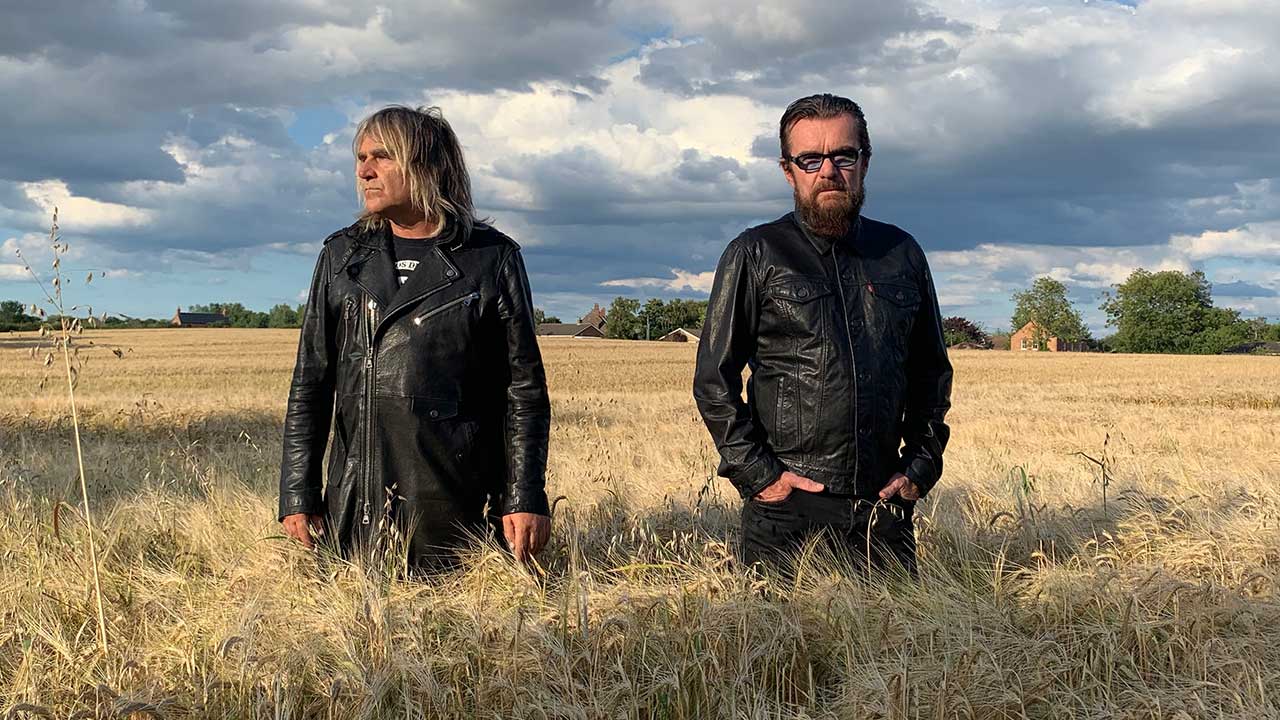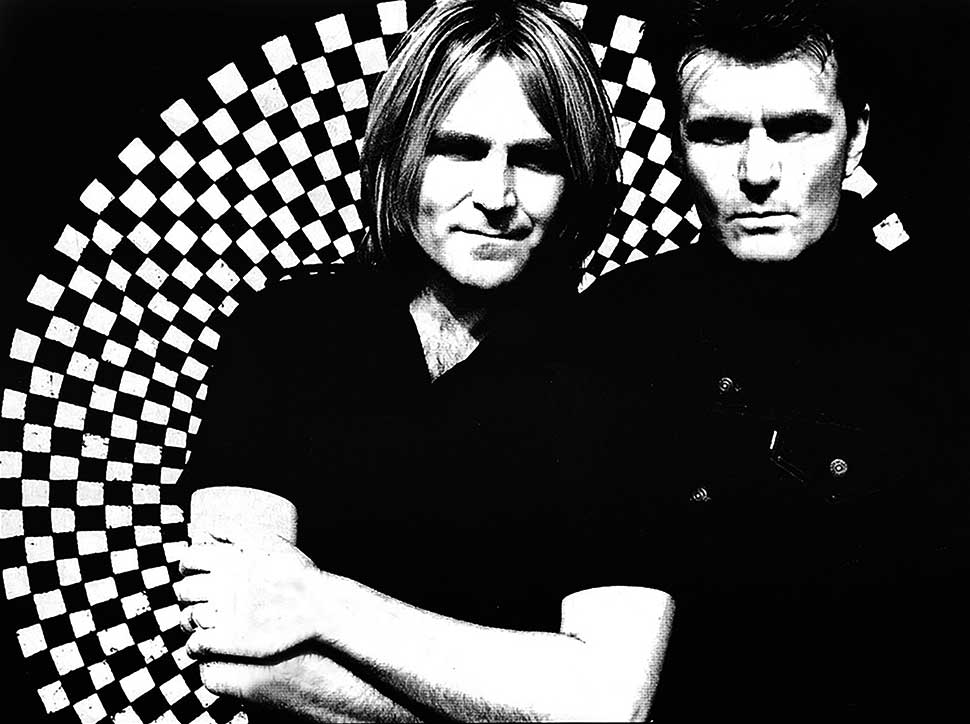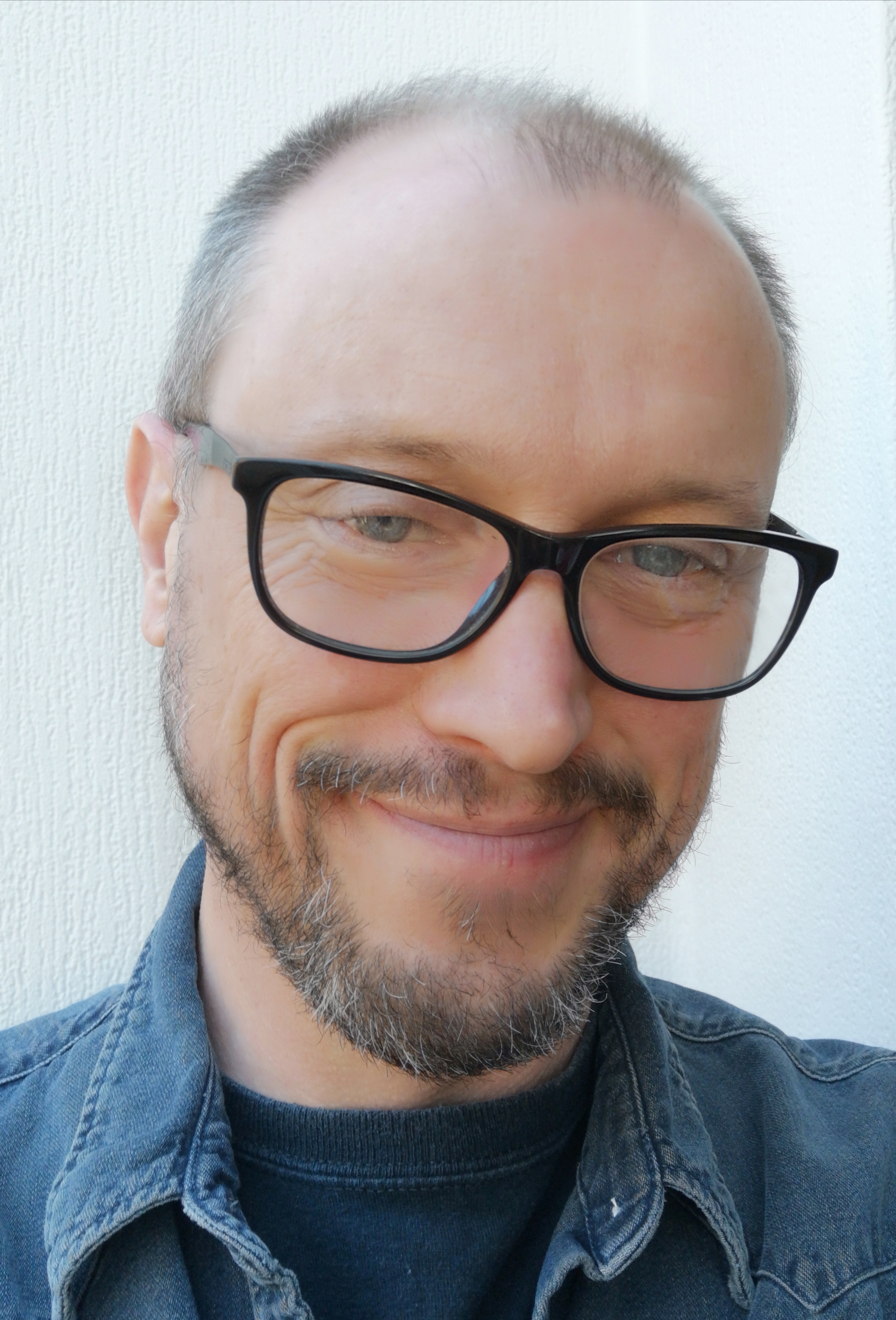Coloursøund: the sound of The Cult, The Alarm, and therapy in hiking boots
A collaboration between Cult guitarist Billy Duffy and The Alarm frontman Mike Peters, Coloursøund is a labour of love rather than a ‘supergroup’

Billy Duffy might have lived the long-haul rock’n’roll dream as the guitarist in The Cult, and he might be calling Classic Rock from his pad in LA, but he grew up on a council estate in Manchester, and his accent is untainted by any mid-Atlantic drawl. His inner punk wouldn’t let that happen.
We’re talking about his second swing at Coloursøund, his freshly revived collaboration with The Alarm’s Mike Peters, and Duffy is keen to pre-empt any ‘supergroup’ alarm bells.
“You read about these so-called ‘rock stars’ who get together and you think:, ‘Oh god!’” says Duffy, who recently turned 60 and still looks great. “But Mike and I have a bond. The band stems from genuine friendship and shared interest. Mike has a joy for life, and I’ve known him long enough to know it’s not a passing phase.
"I find that joy infectious to be around. We’re very different, and there are times when I’m like: ‘Mike – chill your beans!’ But he’s an inspiring individual. I’ve seen him play clubs and within a couple of songs you think you’re in an arena.”
He’s dead right about Peters, who’s two years older. There’s a steely mind behind the Welshman’s chatty charm, but his lust for life is palpable. Health-wise, suffice to say the mid-90s cancer beater is doing very well, and since March 2020 he’s been hosting his Big Night In, his DIY TV show shot at his home and viewable on Facebook/YouTube.
In it he performs live, plays footage from his archive, and talks about his enduring career. The most-watched episode was last June, when Duffy dropped in via Zoom to play an old Coloursøund tune and reminisce about that band’s own glancing shot at the big time.

That shot was 22 years ago now, but, Peters says, “the fire never went out. We all know relationships are like a lightning strike. The chemistry between Billy and Ian [Astbury, Cult frontman] is electric, and there’s definite chemistry between us too. You can put the main ingredients of two bands together and it doesn’t always work.
The latest news, features and interviews direct to your inbox, from the global home of alternative music.
"I can’t put my finger on it. I’m such a fan of Billy as a player, I don’t want to intrude. He and Ian don’t want The Cult to sound the same, they want to move on. And I revere them for that. But in Coloursøund we can just be ourselves.”
That chemistry and ease is part of what makes their new record, Coloursøund II, such a charged listen. Duffy’s huge, edgy riffs – cranked out with trademark punk energy on his trademark Les Paul and Gretsch White Falcon – underpin Peters’s unreconstructed, arena-friendly frontmanship, and that well-suited combination sets their record apart from that of their two ‘home’ bands.
With the line-up completed by producer/ bassist George Williams and The Alarm’s highly prolific drummer Steve ‘Smiley’ Barnard, Coloursøund II was recorded in Chapel Studios in Lincoln last July, between lockdowns. Duffy wanted it to be a stripped-down, old-school rock record – simple, direct and with few overdubs.
“Not that many people make records like that any more,” he says. “The essence is four people rocking out in the room – add a bit of fairy dust and icing as required and call it a record. The remit was for it to be organic and honest, to have a good spirit, to catch that moment in time.
"We didn’t want to overthink stuff, but by the same token it’s not a throwaway thing slapped together over a weekend. There’s a fine line between careless and carefree. Me and Mike don’t get to work together too often. It’s a pleasure, and that’s how we want to keep it.”
Duffy has been at Rockfield lately, working on The Cult’s next album. This year is the 40th anniversary year of The Alarm, and their latest album, War, came out in February. Back when the pair first met back in 1995, their fortunes were very different. It was at the Phoenix Festival in Stratford-upon-Avon, where they started talking on the sidelines of a music industry five-a-side football tournament and hit it off.
They’d both come up in the punk era, both been in the business since the late 70s and knew a lot of the same people. They had a similar background and, before punk hit, they grew up on the same bands – David Bowie, Thin Lizzy, Alice Cooper. Perhaps oddly, they shared an early affection for Wishbone Ash.
Unhappy within The Alarm, Peters had sensationally quit the band in ’91 at the end of a show at Brixton Academy, and had since followed a solo path. The Cult had enjoyed big success in the 80s with the albums Electric and Sonic Temple, but in the grunge era their brand of low-slung Les Paul rock was on the wane, and they split in early ’95. Duffy drifted back from the US to the UK to lick his wounds.
“I was living in London,” he says, “and going up to the North-West to see my family and watch the football. I was spending more time with hiking boots and a rucksack on – that was my antidote to having been in The Cult for twelve years straight, in a tour bus, plane or hotel, or backstage. When it stopped suddenly I wasn’t Billy Duffy from The Cult, I was just a bloke in his late thirties. I was like: ‘Oh, so what does Billy Duffy the bloke like doing?' Well, I like a ramble, I do play a bit of football. I just did normal stuff.”
Peters was partial to a ramble himself, and a year or so after Phoenix he invited Duffy to his home in Wales, to hike, to hang out. “Billy turned up on Saturday night, we watched Match Of The Day, and by the time it had finished we’d written our first song together, In Circles [which came out on Peters’s 1998 album Rise]. Our friendship grew into something unique. In the isolation of walking or hours on end in Snowdonia, we were relaxed enough to talk deeply and open up to each other.”
They compared notes on their band predicaments. As a singer, Peters could offer Duffy a fresh perspective on some of Astbury’s behaviours. Duffy could provide a guitarist’s-eye view of some of the frustrations that led Peters to ditch The Alarm. As contemporaries, they could discuss the highs and lows of their business. This was therapy, in hiking boots.
And the guitars kept coming out. They wrote songs in a shack in North Wales, recording demos on an eight-track. Duffy supplied the riffs, and Peters could immediately hear the top lines and lyrics to sing over them. In an atmosphere free of artistic pressure or inter-band resentment, Coloursøund was born.
Their stock in trade was catchy, uplifting, stadium-tooled anthems with timeless titles: Fountainhead, Heavy Rain, Alive. They brought in drummer Craig Adams (The Mission/The Cult) and bassist Johnny Donnelly (Saw Doctors), and took it live.
In 1998 Coloursøund played The Gathering, the festival Peters regularly held for Alarm fans. They got a residency at The Barfly in London, and word began to spread. A&R scouts hovered. When the group played South By Southwest in Texas that year, the place was packed.
“We had a secret weapon,” says Peters. “We could play Cult and Alarm songs legitimately. We’d play Rain by The Cult then go into our own Fountainhead; Alive would come after Strength by The Alarm. Audiences went wild. Billy introduced us to Bob Rock, who’d produced [1999 Cult album] Sonic Temple. We went to Hawaii to write some new songs, so we were gearing up to sign a big record deal, and record an album with Bob. Then we came back, did the LA2 in London, and Ian Astbury was at the gig.”
The day after the LA2, Duffy got a call: The Cult were starting up again. They’d been offered a slot high up the bill at Woodstock.
“I was surprised,” Duffy says, “because it had been four years. But it was one of those awful impossible decisions. I love both these guys, but The Cult’s my life’s work, as The Alarm is Mike’s. I made the correct decision [to re-join The Cult], but I do regret the timing. It was going well for Coloursøund.”
“I was pretty devastated,” Peters says with a sad little laugh. “I knew I couldn’t keep Billy to myself, but deep down I was hoping the call wouldn’t come so early. For our generation, Coloursøund could’ve operated in the space where the Foo Fighters live now, we had that sort of potential.
"But when the call did come, I said to Billy: ‘You’ve got to do it. This is why we’ve been doing this, to rebuild our confidence’. Then the call came for me in 1999, when I was offered a tour with Big Country. Then I became The Alarm MM.”
Coloursøund had served its purpose, giving them both focus and self-belief in tricky times. Pieced together from demos, their self-titled debut album was released that year, and earned positive reviews in the rock press. (It’s just been reissued on streaming sites, and still holds up well.) And that, it seemed, was that.
In 2007, Peters led a hike up to the top of the Empire State Building for his cancer charity, Love Hope Strength. Duffy joined, and they played an acoustic show on the roof. They also went out as Dead Men Walking, which included Captain Sensible and former Pistols bassist Glen Matlock.
In 2017, when The Alarm played the James Bridges Theater at UCLA, Duffy got up and did a few tunes with them, including Coloursøund’s Fade In Fade Out Fade Away. “And the place went mad,” Peters recalls. “Our songs are great. You only have to hear them once. They work live. The interest never went away.”
The following year the pair hiked the Grand Canyon for Love Hope Strength. The guitars came out again, and the idea of revisiting Coloursøund came up. Duffy played on Blood Red Viral Black on The Alarm’s 2019 album Sigma. That December he emailed Peters a riff.
“Something a bit Culty,” he wrote. “See if it inspires.”
“I sent him an email back with a chorus” says Peters, “and off we went. Billy said: ‘You do realise this means were going to have to make a record?’”
That song became Paradise (Free People), the opening track on Coloursøund II. The riff’s very Duffy, very She Sells Sanctuary, but with Peters’s stadium-busting, fine-fettle voice on it (‘Let’s go, let’s go, let’s go, down to paradise where the flowers grow’) this Cult-Alarm chimera becomes its own thing. The rest of the album was written last January at Peters’s beach house in Pontllyfni, North Wales, the pair cooking up a dozen songs over three wet and windy winter days.
With support from Williams and Smiley, Coloursøund II is a powerful record that accomplishes what Duffy and Peters set out to achieve. It’s exactly the sum of its impressive parts. Again, the song titles point to the directness Duffy was after – Eye For An Eye, Addiction, Start A Fire.
“I wanted these to be great rock lyrics that caught the rock ‘n’ roll spirit of the music,” Peters says, bubbling with that infectious joy, “and not personal or laden with meaning. Lightning Strike is like: ‘This city’s going to burn tonight from a lightning strike’. It’s just: ‘Let’s set this city on fire with a great gig!’ Simple lyrics with sex appeal and charisma that can sit alongside Billy’s dynamic playing.”
Both men are now busy with their main bands, but they’re open to Coloursøund shows should the opportunity arise.
“We’re working this in alongside our other gigs,” says Duffy. “Coloursøund is meant to be a joyous collaboration. It’s not a heavy sell, it’s a light sell. It’s for people who might be predisposed to it. We tried to make an uncomplicated album in complicated times.”
A music journalist for over 20 years, Grant writes regularly for titles including Prog, Classic Rock and Total Guitar, and his CV also includes stints as a radio producer/presenter and podcast host. His first book, 'Big Big Train - Between The Lines', is out now through Kingmaker Publishing.

